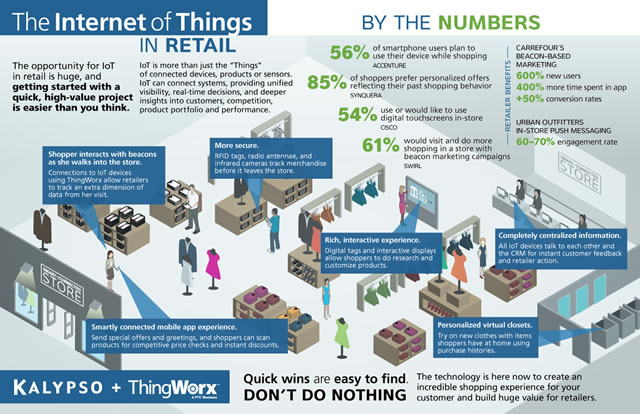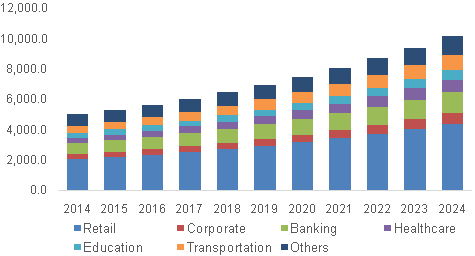Digital signage is part of many of the most used Internet of Things use cases. It is, for instance getting ‘hot’ in retail where digital signage can be used for many goals such as highly personalized messages to store visitors.
Digital signage in a retail Internet of Things context is not comparable with the first wave and more primitive forms of digital signage such as monitors showing a general message. While these forms of digital signage applications (and many others) continue to exist, the IoT changes and boosts the industry. More importantly: it offers enormous opportunities in many types of applications.
The digital signage market is growing fast and not only in retail. Digital signage is used across several industries, often in a customer-facing context but also in Industrial Internet of Things applications where information from tagged items can be displayed.

The many use cases and sectors in digital signage
Among the industries using digital signage, on top of retail, are healthcare, transportation/logistics, financial services (retail banking), education and other business or industrial applications.
The digital signage market is expected to reach $29,939.6 million by 2029.
In the graphic below this article you can see the predicted evolutions with a breakdown per industry.
Digital signage also consists of several types, ranging from digital kiosks and video walls to digital posters.
So, it can be useful for smaller audiences and for larger audiences in any type of context. This also goes beyond pure business, for example in government or public service applications to inform citizens.
A rapidly growing market with many drivers and some challenges
That is also what Grand View Research says. The company has published research in October 2016 on the digital signage market which was valued at $4,986.1 million in 2015 and is now expected to reach $29,939.6 million by 2029.
According to the company new and innovative products such as home monitoring systems, leak detectors and forex cards will boost demand. We think that also retail and healthcare will be big drivers of digital signage demand. On top of demand drivers from several industries and applications, there are also the advancements in display system technology with the evolution of LCD, OLED, Super AMOLED, and LED.
However, there are also challenges. Compatibility, interference and connectivity are some of them.
The role of the advertising industry and of touch
A last market that shouldn’t be underestimated when it boils down to digital signage is the advertising and marketing industry which has been an early adopter but also will see more opportunities as the adoption of Internet of Things technologies by organizations and by consumers will continue to grow.
The use of displays in general is also evolving with the Internet of Things. The ability to engage with screens, for instance, is also becoming more important.
In the infographic from Kalypso below, also show on the Viewpoints site, you can see how digital tags and interactive displays allow shoppers to do research and customize products.

Digital signage across the globe
When looking at the regional breakdown, the research says that the US and Europe (mainly the UK and Germany) are boosting the market.
However, it is expected that Asia Pacific will take over Europe while North America is expected to dominate the industry as the image shows.
Especially in India in China important growth is expected, among others due to growing application in retail stores, hospitals, hotels and corporate offices the research says.

More details about the leading vendors and technologies here.
Top picture: purchased on Shutterstock. Copyright: phive. All other pictures: see mentioned owners in image description and links.

